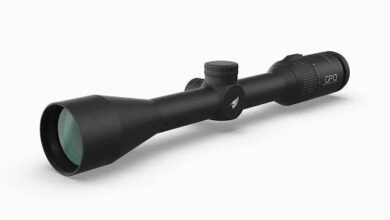Maximizing Flow Control Efficiency with Advanced Technologies

In today’s fast-paced industrial landscape, achieving optimal flow control efficiency is critical for industries such as oil and gas, water treatment, pharmaceuticals, and manufacturing. Flow control systems regulate the movement of liquids, gases, and slurries to ensure safe, consistent, and efficient operations. With the rise of advanced technologies, achieving peak performance in flow control has become more accessible and cost-effective than ever before. This blog explores the latest innovations in flow control technologies and how they contribute to improved efficiency, reliability, and sustainability.
The Importance of Flow Control Efficiency
Flow control efficiency directly impacts operational costs, energy consumption, and system reliability. Inefficient flow control can lead to:
- Increased energy usage and operating costs.
- Equipment wear and tear, leading to downtime.
- Inconsistent product quality in manufacturing.
- Environmental hazards due to leaks or spills.
By improving flow control efficiency, industries can reduce these risks, enhance productivity, and achieve regulatory compliance.
Advanced Technologies Revolutionizing Flow Control
Several cutting-edge technologies are driving improvements in flow control systems. Let’s dive into some of the most impactful advancements.
Smart Valves and Actuators
Smart valves and actuators integrate sensors and control mechanisms to provide real-time data and automated adjustments. These devices are pivotal in optimizing flow control efficiency by:
- Monitoring in real-time: Sensors detect pressure, temperature, and flow rate, ensuring the system operates within optimal parameters.
- Automated adjustments: Actuators respond to changing conditions by altering valve positions, reducing the need for manual intervention.
- Predictive maintenance: Smart valves can predict potential failures, allowing operators to address issues proactively.
These features not only improve efficiency but also extend the lifespan of flow control equipment.
IoT-Enabled Flow Control Systems
The Internet of Things (IoT) has transformed the way flow control systems operate. IoT-enabled systems allow for seamless connectivity between devices, enabling remote monitoring and control. Key benefits include:
- Real-time analytics: IoT systems collect and analyze data to identify inefficiencies.
- Remote access: Operators can adjust flow parameters from anywhere, ensuring immediate response to issues.
- Integration with predictive analytics: IoT devices work in tandem with AI-powered algorithms to predict performance trends and optimize operations.
By leveraging IoT, industries can reduce downtime and enhance overall flow control efficiency.
Advanced Materials for Valves and Pipes
Material science plays a critical role in improving flow control systems. Modern materials like advanced polymers, ceramics, and composites provide:
- Higher durability: Resistance to corrosion and wear extends the life of components.
- Improved flow dynamics: Reduced friction inside pipes and valves minimizes energy losses.
- Thermal stability: Materials that withstand extreme temperatures ensure consistent performance.
The use of advanced materials enhances both efficiency and system reliability, even in challenging environments.
AI and Machine Learning in Flow Control
Artificial intelligence (AI) and machine learning (ML) algorithms are game changers for flow control systems. These technologies analyze vast amounts of operational data to:
- Optimize performance: ML models predict the most efficient settings for flow control systems.
- Detect anomalies: AI quickly identifies deviations from normal operations, preventing costly failures.
- Adapt to changing conditions: AI-driven systems adjust parameters dynamically based on real-time data.
This level of automation significantly reduces manual oversight and enhances flow control efficiency across industries.
Energy-Efficient Pumps and Compressors
Energy consumption is a major consideration in flow control efficiency. Advances in pump and compressor design have introduced features such as:
- Variable frequency drives (VFDs): These adjust motor speed to match demand, reducing energy waste.
- Magnetic bearings: These reduce friction, improving pump efficiency and reliability.
- High-efficiency impellers: Enhanced designs minimize energy losses and maximize flow rates.
Energy-efficient pumps and compressors contribute to both cost savings and environmental sustainability.
Digital Twins in Flow Control Systems
Digital twin technology creates a virtual replica of flow control systems, enabling operators to simulate and optimize performance without disrupting operations. Key advantages include:
- Scenario testing: Digital twins allow for testing different flow conditions and system settings.
- Failure prediction: Simulations identify potential weak points in the system before they lead to breakdowns.
- Continuous improvement: Real-time updates to the digital twin provide ongoing insights into system performance.
Digital twins are invaluable for complex systems where precision and reliability are paramount.
Enhancing Flow Control Efficiency Through Integration
Integrating advanced technologies into existing systems requires a strategic approach. Key steps include:
- Assessing current performance: Identify inefficiencies and prioritize areas for improvement.
- Selecting the right technologies: Choose solutions that align with operational goals and system requirements.
- Training personnel: Ensure that staff are equipped to operate and maintain new technologies.
- Regular maintenance: Adopt a proactive approach to equipment upkeep, leveraging predictive maintenance tools.
Successful integration not only improves efficiency but also enhances system scalability and adaptability.
Case Studies: Real-World Applications of Advanced Flow Control
Oil and Gas Industry
An oil refinery implemented IoT-enabled smart valves and AI-driven analytics to optimize pipeline flow rates. This resulted in a 20% reduction in energy consumption and minimized the risk of equipment failure.
Water Treatment Plants
A municipal water treatment plant adopted energy-efficient pumps with VFDs, achieving a 30% decrease in energy costs while maintaining consistent water quality.
Pharmaceutical Manufacturing
A pharmaceutical company utilized digital twins to simulate flow conditions in their production lines, ensuring precise dosing and reducing material waste by 15%.
Sustainability and Flow Control Efficiency
As industries face increasing pressure to reduce their environmental impact, advanced flow control technologies play a vital role in achieving sustainability goals. Key contributions include:
- Energy savings: Efficient pumps and valves reduce energy consumption, lowering greenhouse gas emissions.
- Waste reduction: Precise flow control minimizes material waste in production processes.
- Leak prevention: Smart systems detect and address leaks quickly, preventing environmental contamination.
By investing in these technologies, companies can align their operations with global sustainability standards.
Future Trends in Flow Control Technologies
The future of flow control is shaped by ongoing advancements in technology and increasing demand for efficiency and sustainability. Emerging trends include:
- 5G connectivity: Faster and more reliable data transmission will enhance IoT-enabled flow control systems.
- Hydrogen-compatible materials: As hydrogen becomes a key energy source, materials that withstand its unique properties will be essential.
- Edge computing: Processing data closer to the source will improve real-time decision-making in flow control systems.
- Blockchain for supply chain transparency: Tracking the lifecycle of flow control components ensures quality and compliance.
These trends promise to take flow control efficiency to new heights.
Investing in Advanced Technologies for Optimal Efficiency
Maximizing flow control efficiency is essential for industries striving to reduce costs, enhance reliability, and achieve sustainability. Advanced technologies such as smart valves, IoT-enabled systems, AI, and energy-efficient pumps provide powerful tools to achieve these goals. By integrating these innovations into their operations, companies can stay ahead of the competition while meeting regulatory and environmental standards.
At the heart of flow control efficiency lies the commitment to innovation and continuous improvement. Whether through adopting digital twins, leveraging AI-driven insights, or investing in advanced materials, the opportunities to enhance system performance are endless.
Are you ready to maximize your flow control efficiency?
Start by exploring the latest technologies and partnering with experts who can guide you through the transition. With the right approach, your operation can achieve unparalleled efficiency and sustainability in the years to come.



